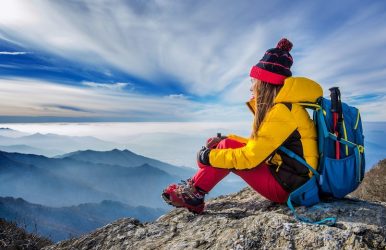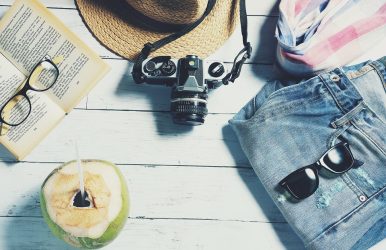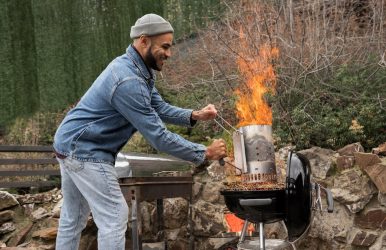Campfire Cooking Techniques for Every Type of Meal
BY
Abdul Aziz
Jun 7, 2023
If you're reading this, you probably love the great outdoors as much as you enjoy good food. There's something undeniably special about preparing a meal surrounded by nature, with the warmth and crackle of a campfire as your backdrop.
Whether you're a seasoned camper or new to the outdoor cooking game, this comprehensive guide on campfire cooking techniques is here to help you elevate your skills and impress your fellow campers with mouthwatering meals under the stars.
For centuries, humans have huddled around campfires for warmth and to cook food that sustains us on our journeys. Campfire cooking is an art, and like any art, it requires a bit of know-how and practice.
In this post, we'll delve into essential equipment, building the perfect cooking fire, various cooking techniques, temperature control, and even some tempting recipes to try out on your next adventure.
Essential Campfire Cooking Equipment
Before diving into the various campfire cooking techniques, let's ensure you're well-equipped for the journey.
Having the right tools on hand can make a difference when you're out in the wilderness, transforming your campfire meals from ordinary to extraordinary.
Here's a handy list of essential campfire cooking equipment that will serve you well during outdoor culinary escapades.
Cast Iron Cookware
Cast iron is a camper's best friend when it comes to cookware. It's durable, versatile, and retains heat like a champ. Here are the key players you'll want to have in your campfire cooking arsenal:
Skillets: A good cast iron skillet is indispensable. From frying eggs to searing steaks, it can handle almost anything you throw at it.
Dutch ovens: These heavy-duty pots are perfect for slow cooking, stews, and even baking. With a snug-fitting lid and sturdy construction, a Dutch oven is an investment that will last for countless camping trips.
Cast iron pot: A versatile cast iron pot can be used for boiling, simmering, and even deep frying. Whether making a big pot of chili, whipping up a batch of pasta, or frying some delicious campfire donuts, a cast iron pot is a must-have addition to your outdoor cooking equipment.
Cooking Grates And Tripods
A sturdy cooking grate or tripod can be a game-changer for campfire cooking. They provide a stable platform for your cookware and make it easy to control the heat by adjusting the distance from the flames.
Long-Handled Utensils
Cooking over an open fire can get hot—literally. Long-handled utensils like tongs, spatulas, and spoons will give you the extra reach you need to keep your hands safe from the heat while flipping, stirring, and serving.
Fire-Resistant Gloves
Safety first! A good pair of fire-resistant gloves can protect your hands from accidental burns, making it easier to handle hot cookware, adjust logs, or even move cooking grates.
Chimney Starters And Fire Starters
Getting your fire going quickly and efficiently is key. A chimney starter can help you easily light charcoal, while fire starters (like tinder, firelighters, or even some trusty old newspaper) can make starting a wood fire a breeze.
Of course, these are just the basics. Depending on your preferred cooking techniques and personal preferences, you might want to add a few other items to your campfire cooking kit.
Wire Grill Brush
Keeping your cooking grates clean is vital for both hygiene and flavor. A wire grill brush is essential for scrubbing away stuck-on food and residue from your grill grate. This will ensure a clean surface for your next campfire meal, preventing unwanted flavors and potential flare-ups.
Building The Perfect Campfire For Cooking
Now that we've got the equipment sorted, it's time to talk about the star of the show: the campfire itself.
Building the perfect campfire for cooking might seem intimidating at first, but with a little know-how and practice, you'll be a fire-taming pro in no time.
Let's walk through the steps to create a safe and efficient cooking fire that'll have you whipping up scrumptious meals in the great outdoors.
Selecting The Right Location
Location is everything when it comes to setting up a campfire. First and foremost, make sure fires are permitted in the area you're camping in.
Once you've got the green light, choose a spot that's flat, clear of any overhanging branches or vegetation, and protected from strong winds. If there's an existing fire pit or ring, use that to minimize your impact on the environment.
Gathering And Preparing Firewood
Fuel your fire with the right kind of wood. Hardwoods like oak, hickory, or maple are ideal for cooking because they burn longer and hotter than softwoods.
Gather a mix of tinder (small, dry twigs or leaves), kindling (slightly larger sticks), and firewood (larger logs) to ensure a well-balanced fire.
Remember to collect only downed and dead wood, and never cut live trees for firewood.
Building A Fire Pit
If there isn't an existing fire pit, create one by digging a shallow hole and surrounding it with a ring of rocks.
This will help contain the fire, making it safer and easier to manage. Keep a bucket of water or sand nearby to extinguish the fire when you're done cooking.
Different Types Of Campfire Structures
The structure of your campfire plays a significant role in how it burns and how suitable it is for cooking. Here are three popular campfire structures you can try:
Teepee: This classic structure involves stacking tinder and kindling in a cone shape, with larger logs leaning against them. It's easy to light and perfect for a quick, high-heat fire when you need a hot fire for faster cooking.
Log cabin: Build a square structure by stacking logs in alternating layers, with tinder and kindling in the center. This creates a stable, long-burning fire that's great for extended cooking sessions.
Lean-to: Place a large log as a windbreak and lean smaller logs, kindling, and tinder against it. The lean-to structure works well when shielding your fire from the wind.
Fire Safety Tips
The biggest priority when dealing with fire is campfire safety. Keep your fire at a manageable size, never leave it unattended, and fully extinguish it before you leave or go to sleep. Drown the fire with water, stir the ashes, and ensure they're cold to the touch before you call it a night.
Campfire Cooking Techniques
Armed with your essential equipment and a perfect campfire, you're ready to dive into the world of campfire cooking techniques.
There's more to outdoor cooking than just throwing some hot dogs on a stick (although that's always a fun option).
Explore these different methods to expand your campfire cuisine repertoire and impress your fellow campers with your culinary prowess.
Direct Heat Grilling
Direct heat grilling is the most straightforward and intuitive campfire cooking method, especially when cooking meat. Place your food directly over the heat source and let the flames work their magic. This technique is perfect for:
Skewers and kebabs: Thread your favorite meats, veggies, and even fruits onto skewers for a quick and easy meal that's as fun to make as it is to eat.
Burgers and hot dogs: No campfire cooking experience is complete without the classics. Throw some burgers or hot dogs on a grill grate and enjoy the smoky, charred goodness.
Plank Cooking
Plank cooking involves placing your food on a water-soaked wooden plank, which is then set over the fire. This cooking method infuses your food with a subtle, smoky flavor while keeping it moist and tender.
It's particularly popular for cooking fish, but don't be afraid to try it with other proteins or even veggies.
Foil Packet Cooking
Foil packet cooking is a fuss-free, versatile method perfect for campfire cooking. Foil packet cooking allows your ingredients to cook evenly, ensuring every bite is flavorful.
Simply wrap your ingredients in a double layer of aluminum foil and place the packet directly on the coals or a grill grate. This technique is great for steaming vegetables, cooking delicate proteins, or even baking potatoes.
Dutch Oven Cooking
Dutch ovens are the workhorses of campfire cooking, capable of tackling a wide range of dishes. With a little creativity and practice, you can master these two popular techniques:
Slow cooking: Hearty stews, soups, and chili are just some comfort food classics you can cook low and slow in a Dutch oven.
Baking: Yes, you read that right—you can bake over a campfire! From bread and biscuits to cobblers and cakes, the sky's the limit when it comes to Dutch oven baking.
Skillet And Griddle Cooking
A cast iron skillet or griddle is perfect for cooking up a hearty breakfast, sizzling fajitas, or even frying up some fresh-caught fish. Use a grill grate or tripod to position your skillet over the fire, and you'll be cooking up a feast in no time.
Ash Cooking
For a more primitive approach, try ash cooking. This technique involves burying your food (wrapped in foil or encased in a protective layer of dough) directly in the hot ashes of your campfire.
It's an excellent method for cooking root vegetables, corn on the cob, or even whole fish.
Cooking Over The Coals
Instead of cooking directly over the flames, try cooking over the hot coals for better heat control and even cooking. This method is ideal for foods that require a longer cooking time or more gentle heat.
To cook over the coals, let your fire burn down until you have a bed of glowing embers, then place a grill grate over the coals or use long-handled tongs to position your food directly on them.
This technique works wonders for roasting vegetables, slow-cooking meats, or even cooking up some mouthwatering BBQ.
Roasting Sticks
Sometimes, simplicity is key. Roasting sticks (or skewers) allow you to cook your food right over the open flame, giving you direct control over the heat and cooking process.
This method is perfect for toasting marshmallows, roasting hot dogs, or even grilling up some tasty veggie skewers. Just remember to use a sturdy, heat-resistant stick or skewer, and always be mindful of safety when cooking over an open flame.
Mastering Campfire Cooking Temperature Control
Temperature control is the key to culinary success, even when cooking food over a campfire.
While it might seem tricky to manage the heat without the convenience of a kitchen stove, with a little practice and a few handy tips, you'll be a campfire temperature control pro in no time.
Let's explore the art of mastering campfire cooking temperature control, so you can enjoy perfectly cooked meals every time.
Importance Of Temperature Control
Just like in your home kitchen, controlling the temperature while cooking over a campfire is crucial for achieving the right balance of flavor, texture, and doneness.
Different foods and cooking techniques require different heat levels, so learning how to regulate the temperature is essential for outdoor culinary success.
How To Gauge The Heat
Without a built-in thermometer, gauging the heat of your campfire can be a bit of a challenge.
A simple method to estimate the temperature is to use the hand test. Hold your hand, palm-side down, about 6 inches above the heat source. Count how many seconds you can comfortably keep your hand in that position:
High heat: 2-3 seconds
Medium heat: 4-5 seconds
Low heat: 6-8 seconds
Keep in mind that this test is subjective and depends on your heat tolerance, so use it as a rough guideline rather than an exact measurement.
Adjusting Cooking Distance And Fire Intensity
There are a few ways to control the heat while campfire cooking:
Move your food closer to or farther from the heat source. Using a grill grate with adjustable height, a tripod, or simply placing your food on a cooler area of the coals can help you find the sweet spot for the perfect cooking temperature.
Control the fire intensity by adding or removing fuel. If you need a hotter fire, add more logs or kindling. Let the flames die down or spread out the coals for a cooler fire.
Create different heat zones within your fire pit by shifting coals to one side for direct heat and leaving the other with fewer coals for indirect heat. This way, you can easily move your food between high and low heat as needed.
Using A Thermometer
While the hand test and adjusting your fire can give you a good sense of temperature control, using a thermometer—particularly for meats—can be a game changer.
A probe thermometer can help ensure your meats are cooked to a safe internal temperature, eliminating the guesswork and ensuring perfectly cooked results.
A digital meat thermometer is an excellent choice for precise temperature readings, ensuring that your meats are always cooked to perfection.
Delicious Campfire Recipes To Try
Now that we've explored various campfire cooking techniques, it's time to put your newfound skills to the test with these delicious recipes.
There's one for each cooking method we've discussed, so you can try them all and find your favorite way to enjoy a scrumptious meal on your next camping trip.
Direct Heat Grilling: Sizzling Steak Skewers
Skewer chunks of your favorite steak, bell peppers, onions, and cherry tomatoes on metal or wooden skewers (soak wooden skewers in water for 30 minutes beforehand to prevent burning).
Season with salt, pepper, and a sprinkle of garlic powder. Grill directly over the flames, occasionally turning, until the steak is cooked to your desired doneness and the veggies are tender.
Plank Cooking: Cedar-Planked Salmon
Soak a cedar plank in water for at least an hour. Season a salmon fillet with salt, pepper, and a drizzle of maple syrup or honey.
Place the salmon skin-side down on the soaked plank, and set it over the fire. Cook until the fish is opaque and flakes easily with a fork, about 15-20 minutes.
Foil Packet Cooking: Campfire Veggie Medley
Chop your favorite veggies (such as zucchini, bell peppers, and red onions) into bite-sized pieces. Toss with olive oil, salt, pepper, and your choice of herbs (such as rosemary or thyme).
Wrap the veggie mixture in a double layer of aluminum foil, sealing the edges tightly. Cook the foil packet on a grill grate or directly on the coals for 15-20 minutes, flipping halfway through until the vegetables are tender.
Dutch Oven Cooking: Hearty Campfire Chili
Heat a bit of olive oil and brown ground beef, diced onions, and minced garlic in a Dutch oven. Add canned crushed tomatoes, kidney beans, and chili seasoning packet.
Stir well, cover, and let it simmer over a bed of coals for about an hour, stirring occasionally. Serve with shredded cheese, sour cream, and cornbread for a comforting camping meal.
Skillet Cooking: Campfire Breakfast Hash
In a cast iron skillet, cook diced bacon until crispy. Add diced potatoes, bell peppers, and onions, and cook until the potatoes are tender and the veggies are softened.
Make a few wells in the hash and crack an egg into each one. Cover the skillet with a lid or foil and cook until the eggs are set to your liking. Season with salt and pepper, and serve with hot sauce.
Ash Cooking: Ember-Roasted Sweet Potatoes
Pierce whole sweet potatoes with a fork and wrap them individually in aluminum foil. Bury the wrapped sweet potatoes in the hot ashes of your campfire.
Cook for about 45-60 minutes, occasionally turning until the sweet potatoes are tender. Carefully remove the foil and serve with a dollop of butter, a sprinkle of cinnamon, and a drizzle of maple syrup.
Cooking Over The Coals: Slow-Roasted BBQ Chicken
Season chicken pieces (legs, thighs, or breasts) with your favorite BBQ rub. Place the chicken on a grill grate set over a bed of glowing coals.
Cook, turning occasionally and basting with BBQ sauce, for about 45 minutes to an hour, or until the chicken reaches an internal temperature of 165°F (74°C) when checked with a digital meat thermometer.
Roasting Sticks: Classic S'mores
No campfire recipe list would be complete without the ultimate camping dessert: s'mores! Skewer marshmallows on roasting sticks and toast them over the open flame until golden brown and melty.
Sandwich the roasted marshmallow between two graham crackers with a piece of chocolate and gently press them together. Allow the warm marshmallow to melt the chocolate slightly for a gooey, delicious treat that's sure to be a hit with kids and adults alike.
You May Also Like:
Top 7 Places To Visit For An Asian Solo Traveler
Top 7 Nantucket Beaches For Tourists In Massachusetts
10 Things To Do In Bogota – You Must Know Before Going











